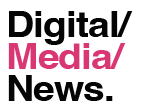Australian publishers face the ongoing challenge of balancing editorial integrity with advertising revenue. As media shifts from print to digital, strategies to maintain trust while ensuring financial sustainability have become essential.
Native advertising and sponsored content are key revenue streams, blending ads with editorial material.
Transparency is crucial, with publishers like News Corp Australia and Nine Entertainment clearly labelling such content to retain audience trust.
Programmatic advertising optimises ad placements but risks controversial alignments, prompting publishers to use AI tools for brand safety and compliance.
Diversifying income through subscriptions and paywalls has proven effective for outlets like The Australian Financial Review and The Sydney Morning Herald, reducing reliance on ads while reinforcing the value of quality journalism.
Direct brand partnerships, such as Guardian Australia’s ethical collaborations, align advertising with editorial missions while maintaining independence.
The shift from third-party cookies has driven investment in first-party data collection. By fostering direct audience relationships through newsletters and memberships, publishers enhance ad targeting and build community trust.
Meanwhile, outlets like Crikey and The Conversation prioritise ethical journalism, relying on reader donations and grants to limit dependence on traditional ad revenue.
Challenges persist, with the risk of blurred lines between editorial and advertising. Regulatory bodies like ACMA enforce standards to address such issues.
Emerging technologies, including AI and blockchain, may further help optimise content and ensure transparency, though publishers must remain cautious.


